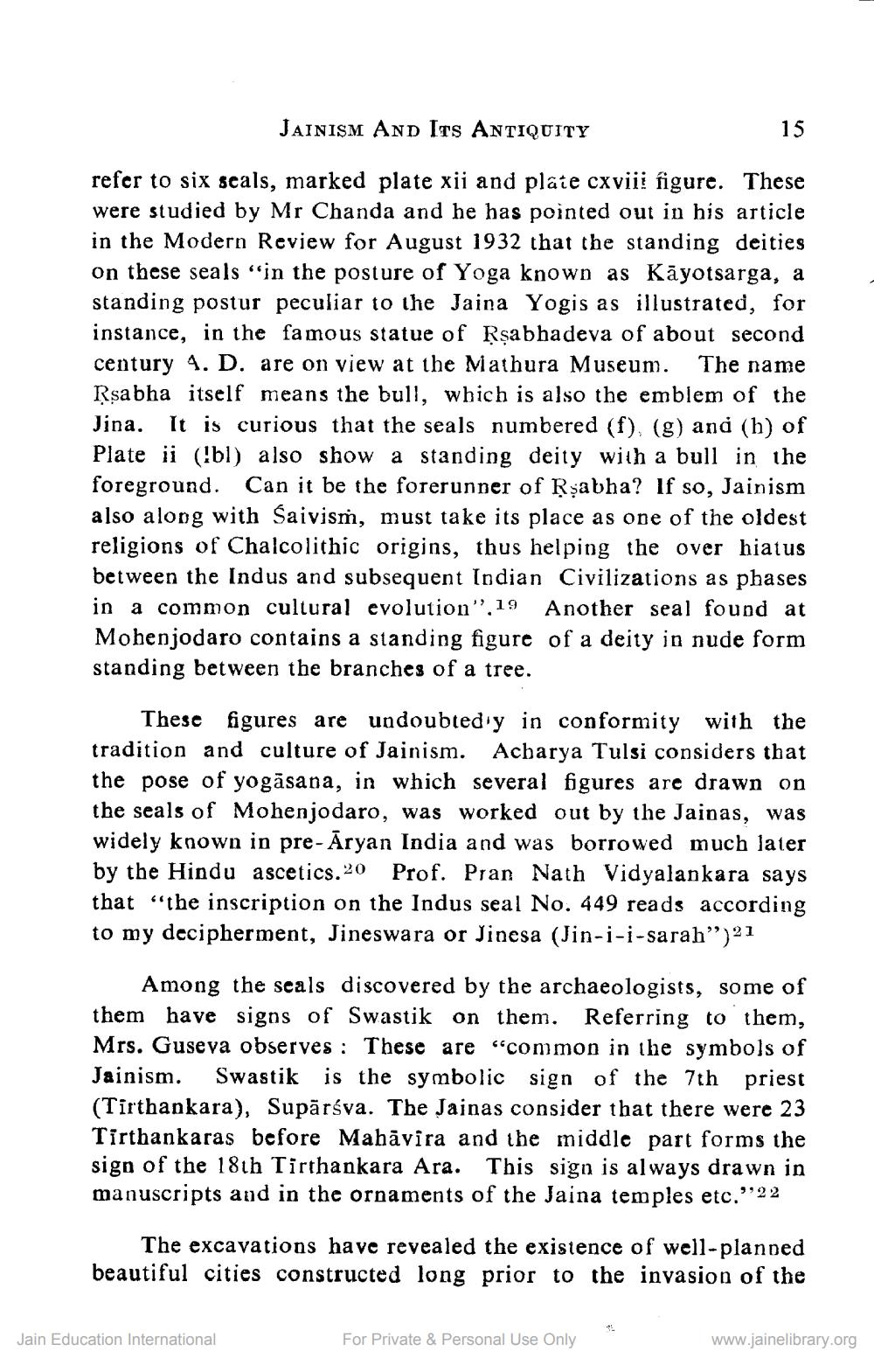________________
JAINISM AND ITS ANTIQUITY
refer to six seals, marked plate xii and plate cxviii figure. These were studied by Mr Chanda and he has pointed out in his article in the Modern Review for August 1932 that the standing deities on these seals "in the posture of Yoga known as Kayotsarga, a standing postur peculiar to the Jaina Yogis as illustrated, for instance, in the famous statue of Rṣabhadeva of about second century 4. D. are on view at the Mathura Museum. The name Rṣabha itself means the bull, which is also the emblem of the Jina. It is curious that the seals numbered (f), (g) and (h) of Plate ii (b) also show a standing deity with a bull in the foreground. Can it be the forerunner of Rṣabha? If so, Jainism also along with Saivism, must take its place as one of the oldest religions of Chalcolithic origins, thus helping the over hiatus between the Indus and subsequent Indian Civilizations as phases in a common cultural evolution".19 Another seal found at Mohenjodaro contains a standing figure of a deity in nude form standing between the branches of a tree.
These figures are undoubtedly in conformity with the tradition and culture of Jainism. Acharya Tulsi considers that the pose of yogasana, in which several figures are drawn on the seals of Mohenjodaro, was worked out by the Jainas, was widely known in pre-Aryan India and was borrowed much later by the Hindu ascetics.20 Prof. Pran Nath Vidyalankara says that "the inscription on the Indus seal No. 449 reads according to my decipherment, Jineswara or Jinesa (Jin-i-i-sarah")21
15
Among the seals discovered by the archaeologists, some of them have signs of Swastik on them. Referring to them, Mrs. Guseva observes: These are "common in the symbols of Jainism. Swastik is the symbolic sign of the 7th priest (Tirthankara), Suparśva. The Jainas consider that there were 23 Tirthankaras before Mahavira and the middle part forms the sign of the 18th Tirthankara Ara. This sign is always drawn in manuscripts and in the ornaments of the Jaina temples etc."22
The excavations have revealed the existence of well-planned beautiful cities constructed long prior to the invasion of the
Jain Education International
For Private & Personal Use Only
www.jainelibrary.org




